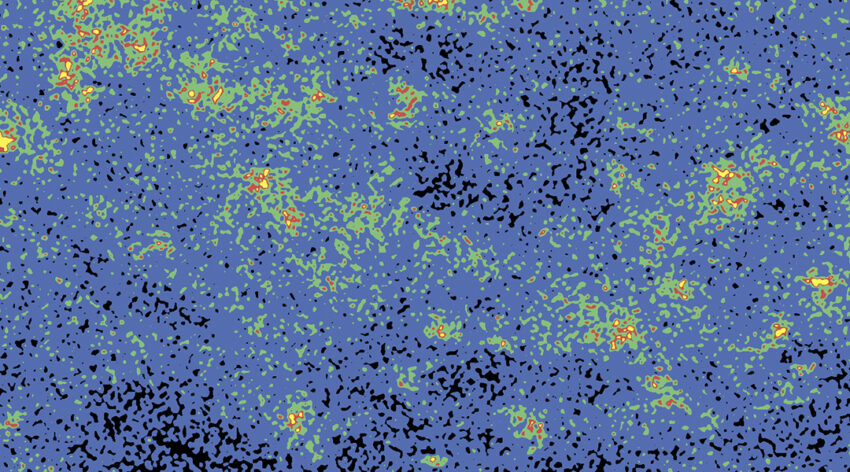Catalysts that mimic antioxidase enzymes show promise in treating inflammatory diseases, such as gum disease, lupus, or cancer.
Oxidative stress can damage cells, proteins, and DNA, and has been linked to a number of diseases, including various inflammatory diseases such as arthritis, lupus, atherosclerosis, cancers, diabetes, and even aging.
“Free radicals are common in our environment, such as in car exhaust or cigarette smoke,” explained Chong Cheng, professor and head of the Advanced Low-Dimensional Materials Group at Sichuan University. “Research has shown their link to a number of diseases, but our bodies are also capable of eradicating them using enzymes known as antioxidases. These enzymes carry out fundamental biochemical reactions that maintain balance.”
Modeling natural enzymes
Inspired by natural antioxidases, Cheng and colleagues from Sichuan University developed a type of nanomedicine that can target a subset of free radicals known as reactive oxygen species (or ROS) to combat previously mentioned diseases.
“Some trauma tissue and inflammatory disease in our body suffer from high-leveled reactive oxygen species,” said Professor Xianglong Han, co-corresponding author of a recent study published with Cheng in Advanced Functional Materials. “Although nanotechnology has been emerging as a strategy for dealing with this situation, its applications are limited.”
The natural enzymes found in our tissues help regulate ROS by scavenging them and alleviating the oxidation state of cellular molecules. “The enzymes can guide the entrance of ROS into their active sites and regulate the redox properties of metal sites via their unique three-dimensional (3D) spatial configurations or axial coordination structure,” said Cheng.
However, in oxidative stress-related diseases, natural antioxidase enzymes alone are not enough to combat the build up of ROS. “This leads to high ROS levels found in periodontal disease, rheumatoid arthritis, osteoarthritis, and chronic ulcer of the skin,” said Cheng. “However, the direct usage of natural antioxidases in inflammatory diseases suffer from several drawbacks, such as antigenicity [triggering an immune response], poor stability after administration, and difficulty in scalable applications.”
It is for this reason than Cheng, Han, and their teams turned to nanomaterials that mimic the structure and function of antioxidases without any of the drawbacks. Their “nanobiocatalysts”, made up of a coordinated network of ruthenium (Ru) metal and porphyrin molecles (also found in hemoglobin), behave as antioxidase enzymes do but are considerably more efficient than their natural counterparts and other reported anti-ROS biocatalysts.
“We mimicked the coordination structure of natural antioxidases,” explained Cheng. “The nanobiocatalysts consist of a network of structures that are full of catalytic sites [to scavenge the ROS]. With these single-atom-dispersed sites, the harmful ROS can be converted safely to water and oxygen.”
Treating periodontitis
After success in cellular studies, the team demonstrated their nanobiocatalysts capabilities in animal models of periodontitis, a disease in which the gums can pull away from the tooth, bone can be lost, and the teeth may loosen or fall out.
“Periodontitis, which can lead to alveolar bone loss, is one of the most common oral diseases, and ROS plays an important role in its development,” said Cheng.
The team delivered their nanobiocatalyst along with stem cells to the affected tissue. The role of the catalyst was to minimize ROS and help ensure the survival of the stem cells being used to treat the tissue decay.
After treatment and examination, the team found that rats treated with their nanobiocatalysts maintained higher alveolar bone levels around their molars compared to a control group. The nanobiocatalyst was also found to create “no obvious difference in the biochemical indices of the liver and kidney functions and no noticeable damage or abnormalities for the major organ tissues, including heart, lung, liver, kidney, and spleen”.
While there is still more work to be done before human trials can begin, the team is optimistic. “Our work provides significant insights into the functions of metal-nitrogen coordinated structures in catalytic ROS-scavenging and offers a new strategy to engineer high-performance antioxidase-like nanobiocatalysts for stem cell-based therapies and inflammatory diseases,” concluded Cheng.
Reference: Jiusi Guo, et al., Antioxidase-Like Nanobiocatalysts with Ultrafast and Reversible Redox-Centers to Secure Stem Cells and Periodontal Tissues, Advanced Functional Materials (2023). DOI: 10.1002/adfm.202211778
Feature image: Analysis of the Ru–N catalytic centers of antioxidase-like nanobiocatalyst

